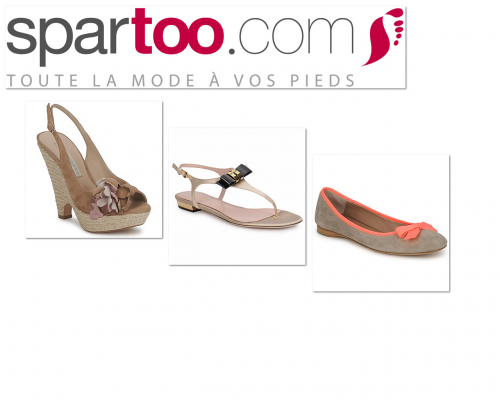While offline fashion retail revenues are taking a nosedive, web fashion store Zalando was recently valued at ?3 billion. In this story you will get insights how social commerce and new digital fashion players are shaking up the marketplace.

Social commerce revenues are growing towards $30 billion by 2015; analyst firms like Gartner and eMarketer are showing us. This weekend we wrote why retailers should embrace See, Like, Buy, a story accompanied by a stunning infographic.
And we have been sharing several inspiring stories on e-commerce, f-commerce, mobile commerce, subscription commerce and other relevant social shopping trends in our category Social Commerce.
How Zalando is disrupting the fashion marketplace?
German company Zalando was launched in 2008 by Robert Gentz and David Schneider, initially under the name Ifansho. Operated by Rocket Internet GmbH, and inspired by US online retailer Zappos.com, Zalando initially specialised in the sale of footwear but has since grown to a multi-brand online fashion platform.
In 2009 Zalando began operations abroad when it started in Austria. In 2010 the company launched in the Netherlands and France, and in 2011 it opened in the UK, Italy and Switzerland. In 2012 it launched in Sweden, Denmark, Finland, Belgium and Spain.
Zalando launched extremely annoying TV commercials, backed by tons of GRPs. But consumers seemed to get the concept and they fuelled Zalado?s growth. In 2011 Zalando showed ?510 million revenue.

In the first 6 months of 2012 Zalando?s revenues even hit ?471 million. So I do expect Zalando to hit ?1 billion by the end of 2012. And that is quite an achievement for a relatively new web company, no matter how much I despise their TVCs.
The only thing Zalando could have done better? Achieve clients at lower costs to create a higher profit. How? By getting a higher ROI on their media investments by using a smarter mix of POE. Think and advertise beyond TV a bit more, like Booking.com has been doing. But I?m convinced this will be stage 2 of Zalando?s marketing roadmap.
Profitable due to heavy TV campaigns or not, that is less important. What really counts is that Zalando is disrupting the marketplace. No wonder that investor Kinnevik acquired another 10% of the Zalando shares for ?287 million.
After the transaction, the Swedish Kinnevik will own 35% of Zalando. And it doesn?t seem to stop here, since Kinnevik announced it would like to invest another ?100 million in Zalando.
Will online shoe store Spartoo be able to compete?
The French online shoe store Spartoo, active in 27 European markets, was recently funded with ?25 million. Spartoo would like to compete with Zalando in the ever growing online fashion retail market.

I doubt if Spartoo is going to be as big as Zalando. But who really cares, since the online shoe market is expected to grow eventually to a staggering ?50 billion market, which are the expectations from the Spartoo investors. Not my forecast.
How the social web will disrupt the fashion marketplace?
The social web and social shopping are gradually taking over part of the retail business. From search to shopping, everything is getting social these days. With social commerce revenues growing to $30 billion towards 2015, new players will try to disrupt the marketplace.

Multi brand online fashion players like Yoox, Asos, Zalando and Spartoo, will all want to grab the biggest possible piece of the social commerce pie. Including eBay, Amazon, Zappos, Groupon and Google.
New online fashion players will probably be funded by other investors with a coke and a smile, in an attempt to shake down more offline fashion retailers and to shake up the ever growing online fashion marketplace.
If I would be CMO at a leading fashion brand?
If I would be CMO at a leading fashion brand today, I would worry about the declining sales numbers in offline retail. And I would be cracking my mind on how to assure my shareholders the growth they all need so badly.

Image provided by our partner shutterstock.
Of course a solution could be to open more brand stores in big cities. That would at least party solve the declining orders from affiliated offline retail stores selling ?our? products.
But knowing that opening up new brand stores would not stop consumers to buy more fashion items online, I would push hard to grow my online market share.
Not only by growing traffic to my brand?s web shop. I would also look for shop-in-shop opportunities, embedding my products in several multi brand online fashion platforms.
So my advice to CMOs in the fashion and other industries; Be where your consumer is, and skate to where the puck is going to be, not where it has been.
As CMO in fashion, I would next bring my web shop to platforms like Facebook, closing the loop of the See, Like, Buy model. And I would embed my online fashion store into the top 200 fashion blogs, offering them a very lucrative affiliate partnership.
And I would ask my digital creative agency to design me a stunning YouTube channel with G+ and a hang-out, in which consumers could buy my fashion items they see, directly from the fashion show videos. Let them buy the items right off the catwalk!
In Pinterest and Twitter I would open a web shop. Next in every other possible social or mobile channel like Foursquare, iPad App or other social or interest network, I would enable with relevant and smart See, Like, Buy features.
I would love to hear your thoughts on the digital fashion marketplace and social commerce. What would be your moves and why?
For more trends in fashion and e-commerce, follow Igor Beuker on Twitter or grab our RSS Feed or select our category Social Commerce.
Source: http://www.viralblog.com/social-commerce/why-web-fashion-store-zalando-is-valued-e3-billion/
devils dodgers rachel maddow gia la riots new jersey devils torn acl
No comments:
Post a Comment
Note: Only a member of this blog may post a comment.